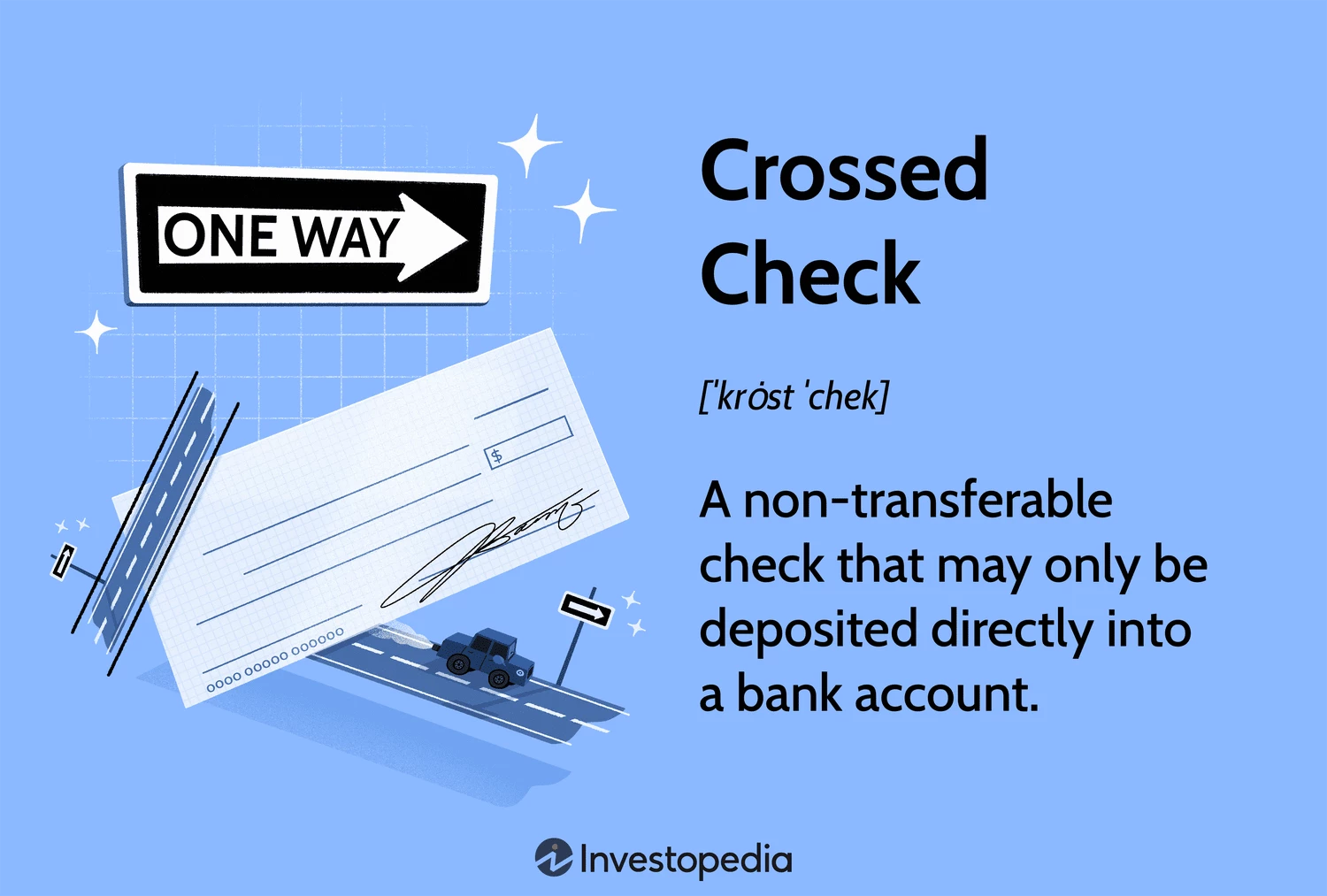Understanding Crossed Checks
A crossed check is a check marked with two parallel lines, either over the entire check or in the top left corner. This marking indicates that the check can only be deposited into a bank account, not cashed immediately by any financial institution.
Key Points:
- A crossed check bears two parallel lines, indicating specific handling instructions to financial institutions.
- Primarily used in Europe, Asia, Mexico, and Australia.
Functionality of Crossed Checks
Crossed checks are common in certain regions like Mexico, Australia, Europe, and Asia, providing clear guidance to banks on fund handling. These checks require the funds to be directly deposited into a designated bank account, ensuring added security.
Recipient banks are mandated to deposit crossed checks, enhancing payer security through this controlled process.
The format of crossed checks varies, with two parallel lines being typical, sometimes accompanied by phrases like “& Co.” or “not negotiable.”
Occasionally, the term “account payee” is written on such checks for the same purpose.
Crossed Check vs. Uncrossing
Crossed checks cannot be uncrossed by the payee and are non-negotiable, limiting handling to direct deposit into an account held by the payee. Uncrossing requires the payer to cancel the crossing, but this revocation is discouraged due to reduced security.
Special Notes:
Crossed checks are uncommon in the United States, posing challenges for depositors.
Special Considerations
Non-compliance with crossing instructions by a receiving bank could breach the agreement with the customer issuing the check. The bank may be liable for losses if the payee lacks sufficient funds for check encashment.
An open check, also known as a bearer check, lacks crossing and can be cashed directly by the payee at a bank counter.
What Are the Advantages?
A crossed check minimizes fraud risks as it can only be deposited, offering traceability if misused. This security feature is valuable for large transactions, safeguarding against unauthorized cashing.
What Are the Disadvantages?
Quick cash access is restricted with crossed checks, as they must be deposited and undergo clearance processes which vary by jurisdiction and bank. Immediate cash needs may be impacted.
Transfer of Crossed Checks
A crossed check cannot be transferred to a third party if marked “not negotiable” or “account payee only,” maintaining security protocols.
In Conclusion
Crossed checks are uncommon in the United States but prevalent in other regions. Foreign account holders may encounter crossed checks, necessitating deposit procedures for accessing funds.
